Table of Contents
Why Your Espresso Gear Setup Matters
Brewing great espresso isn’t just about the machine—it’s about the entire setup. From grinders to tampers, every piece of gear affects the flavor in your cup. If your grind is off or your tamp isn’t even, even the best beans will underperform. That’s why understanding your espresso gear is essential—not optional.
Think of your espresso gear as the tools of a craftsman. You wouldn’t expect a chef to use a dull knife, so why settle for an inconsistent grinder or a plastic tamper? Investing in the right tools will help you unlock the full potential of your machine—and your beans.
This guide is your roadmap to everything that enhances your espresso setup. Whether you’re upgrading your gear or starting from scratch, we’ll help you navigate grinders, tampers, scales, thermometers, and even cleaning kits. Each plays a role in consistency and flavor, and we’ll show you how.
For even more gear guides and brewing tutorials, check out our Grinders and Gear archive.

Choosing the Right Espresso Grinder: Why Burr Beats Blade
If you’re serious about espresso, your grinder is your most important tool. The grind size, consistency, and distribution all affect the flavor, crema, and even extraction time. Blade grinders may be cheap, but they chop beans unevenly—creating an unpredictable and often bitter cup. Burr grinders, on the other hand, crush beans uniformly for better flavor and control.
There are two types of burr grinders: flat burrs and conical burrs. Flat burrs offer precision and clarity—favored by professionals. Conical burrs are quieter and more forgiving, perfect for home baristas looking for excellent results without the café-level price tag.
When shopping, look for grind size adjustability, grind retention, and build quality. Stainless steel burrs last longer than ceramic, and doserless designs make dosing easier. If you’re unsure where to start, we’ve listed our favorite grinder in the gear picks section below.
Already have a good grinder? Make sure you’re storing your beans properly. Visit our guide on espresso beans for tips on freshness and flavor retention.
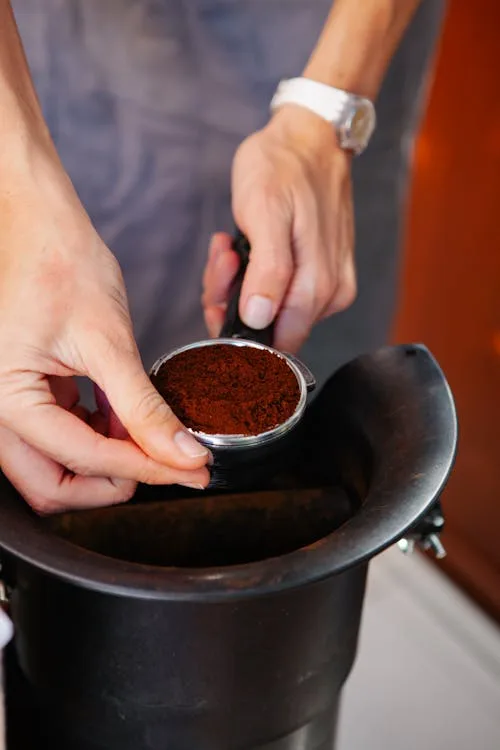
Espresso Tampers: The Key to Consistent Extraction
Once your espresso beans are perfectly ground, the next step is tamping—a small motion with a big impact. The tamper compresses the coffee grounds evenly inside the portafilter, creating a uniform puck. This consistency is crucial for controlling water flow during extraction, which ultimately determines your espresso’s flavor, strength, and crema quality.
Without a proper tamp, water may flow too fast through loosely packed grounds or get trapped in unevenly compressed areas. This leads to channeling—where water finds the path of least resistance—resulting in a sour, weak, or bitter shot. A great grinder gets you 50% there, but a great tamper ensures you don’t lose that advantage in the next step.
Most home espresso setups use a 58mm tamper, which fits standard commercial portafilters. However, it’s essential to measure your basket’s diameter before buying one, as smaller machines may need a 51mm or 53mm model. Look for a tamper that fits snugly in your portafilter basket, leaving minimal gaps around the edges.
What makes a good tamper? Weight and ergonomics play a big role. Heavier tampers (usually stainless steel) help with downward pressure, making it easier to apply the recommended 30 pounds of force. Wood or aluminum handles offer aesthetic options and comfortable grip. Some premium models include features like calibrated pressure (they “click” at 30 lbs) or adjustable bases to ensure an even surface every time.
If you’re brewing multiple shots daily, you may also benefit from a tamper with a leveling base or puck-style distributor. These tools help settle the grounds evenly before tamping, which reduces the risk of side-channeling. They’re especially useful for beginners who struggle with manual evenness.
In tight kitchen setups, a compact tamper stand or tamping station can keep your tools organized and your countertops clean. Plus, using a silicone tamping mat prevents damage to your portafilter and work surface.
Remember, the consistency of your tamp directly affects your espresso. If you’re not getting that rich crema or your shot tastes inconsistent, revisit your tamping technique. A few tweaks—like applying level, firm pressure and finishing with a gentle twist—can elevate your espresso dramatically.
We recommend a high-quality adjustable tamper to take the guesswork out of tamping pressure and alignment. Whether you’re a beginner looking for consistency or a home barista chasing the perfect shot, this is one piece of gear that pays off quickly.
Recommended Pick:
MATOW Dual Head Distributor & Tamper
A well-balanced 53mm tamper with adjustable depth and a distributor base—ideal for improving consistency and reducing channeling. Suitable for most 51–54mm baskets.

Espresso Thermometers: The Unsung Hero of Precision Brewing
When it comes to espresso, temperature matters—more than most beginners realize. A few degrees too hot and your espresso will taste bitter and burnt. Too cool, and it’ll be flat, sour, and under-extracted. That’s where espresso thermometers come in. They help you dial in the ideal range for extraction, milk steaming, and overall temperature control across your espresso workflow.
The ideal brew temperature for espresso falls between 195°F and 205°F (90–96°C). Many higher-end machines regulate this automatically, but entry-level or manual machines often require some guesswork. A clip-on thermometer attached to your portafilter or kettle helps you hit the sweet spot consistently, especially if you’re using a manual or stovetop espresso maker.
For milk steaming, the ideal temperature is slightly lower—around 130–150°F (55–65°C). Go too hot and you risk scalding the milk, ruining both texture and taste. With a thermometer in your frothing pitcher, you can pull the pitcher off the steam wand at just the right moment to create velvety microfoam, perfect for lattes and cappuccinos.
In the absence of a built-in PID controller or smart display, having a thermometer is the most affordable way to gain control over your espresso parameters. It’s one of those low-cost accessories that has an outsized impact on your brew consistency.
There are a few types of thermometers used in the espresso world:
- Dial Thermometers – Analog and rugged. Great for real-time milk frothing feedback.
- Clip-on Thermometers – Ideal for brew kettles or directly attaching to steaming pitchers.
- Digital Thermometers – Faster, more accurate, often used for advanced setups or calibration.
Most baristas swear by analog dial thermometers clipped to their milk pitchers. They’re easy to clean, durable, and provide instant visual feedback. If you’re frothing manually and aiming for latte art, that few-second window between perfect and overheated milk can make or break your pour.
Make sure to regularly calibrate your thermometer if it has a manual adjustment screw. Even high-quality thermometers can drift over time due to heat exposure and handling.
For home baristas serious about improving their espresso game without shelling out for a high-end PID machine, a good thermometer is the next best thing. Combined with a grinder, tamper, and scale, it completes the holy trinity of precision espresso gear.
Want to see how thermometer use varies between beginners and pros? This article by Perfect Daily Grind breaks down the science of extraction temperature and how it influences flavor profiles.
Looking for a simple, affordable thermometer that just works? Here’s our recommended pick for home brewers:
KT THERMO Instant Read Espresso Thermometer
This classic 1.75” dial thermometer clips easily onto your frothing pitcher and reads temperatures from 0°F to 220°F. It’s accurate, easy to use, and budget-friendly—ideal for beginners and everyday baristas alike.
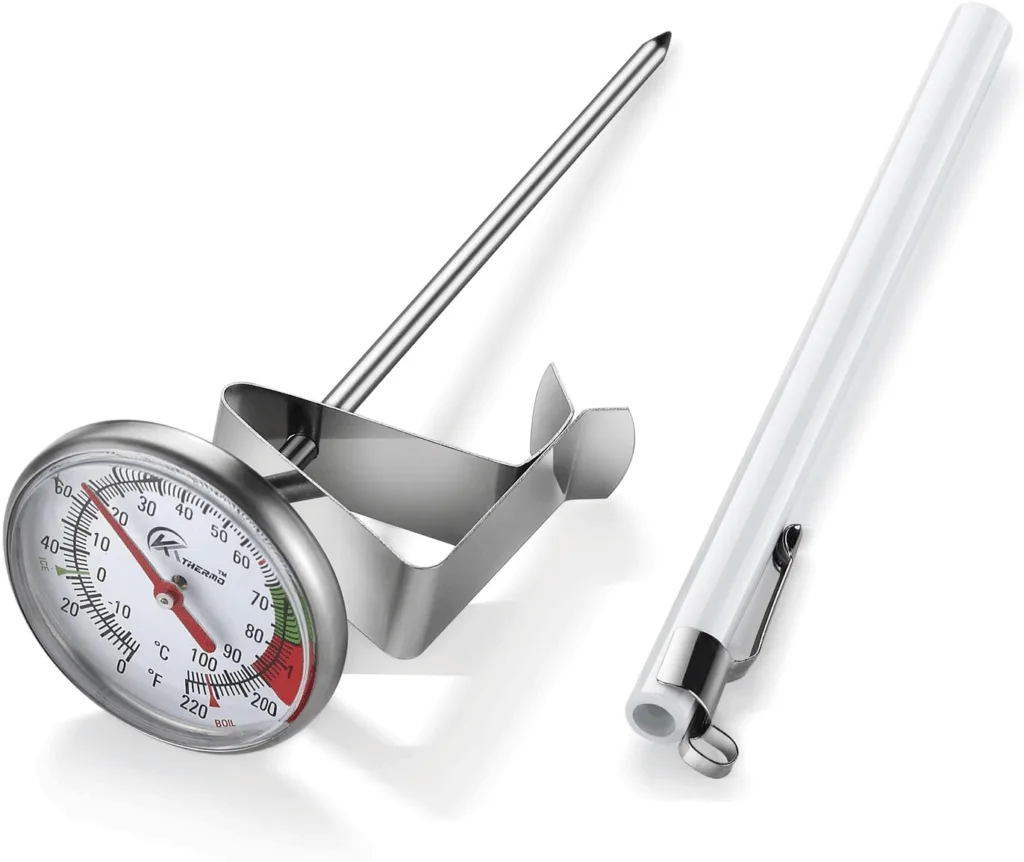
Espresso Scales: Precision in Every Gram
If there’s one accessory that separates guesswork from greatness in espresso making, it’s a proper espresso scale. From dialing in your grind to nailing your brew ratio, a scale turns “good enough” into repeatable perfection. It’s the gear that brings science into your coffee ritual—and once you start using one, you’ll wonder how you ever brewed without it.
For espresso, the most critical use of a scale is during dosing and extraction. Whether you’re using a single, double, or triple basket, measuring your coffee input (in grams) allows you to replicate recipes consistently. Likewise, timing your espresso shot while monitoring output weight lets you control the brew ratio precisely—typically in the range of 1:2 to 1:2.5 for espresso shots.
Here’s what makes a scale “espresso-friendly”:
- Fast Response Time – You don’t want a laggy display when you’re timing a 25–30 second shot.
- High Accuracy – Precision down to 0.1g is the standard for espresso scales.
- Compact Design – Needs to fit comfortably under a portafilter or on a drip tray.
- Timer Functionality – Built-in stopwatch to monitor extraction time.
- Water Resistance – Because spills happen. A water-resistant surface is a must.
Some high-end models even include Bluetooth connectivity and app integrations, but most home baristas don’t need that level of complexity. What matters most is that your scale is fast, accurate, and durable enough for daily use.
Scales also play an important role in milk frothing and pour-over techniques. Measuring water input ensures you’re not over-diluting your shot when building an Americano or adding hot water post-extraction.
If you’re still eyeballing your grounds or going by volume (“one scoop”), you’re playing espresso roulette. Tiny variances in input weight can dramatically affect flavor. The difference between 17g and 18g of coffee in a double shot can mean the difference between brilliance and bitterness.
Whether you’re trying to improve your shot consistency, troubleshoot your grind setting, or replicate your favorite café recipe, an espresso scale is the foundation of precision.
Need proof? This thread by a redditor breaks down the benefits of using a coffee scale in your workflow and why baristas never brew without one.
NEXT-SHINE Espresso Digital Scale
Accurate down to 0.1g with a sleek stainless steel finish and a built-in timer, this compact scale is designed for espresso and kitchen use alike. Its compact size fits most drip trays and it’s an ideal first step toward brewing more consistent shots.
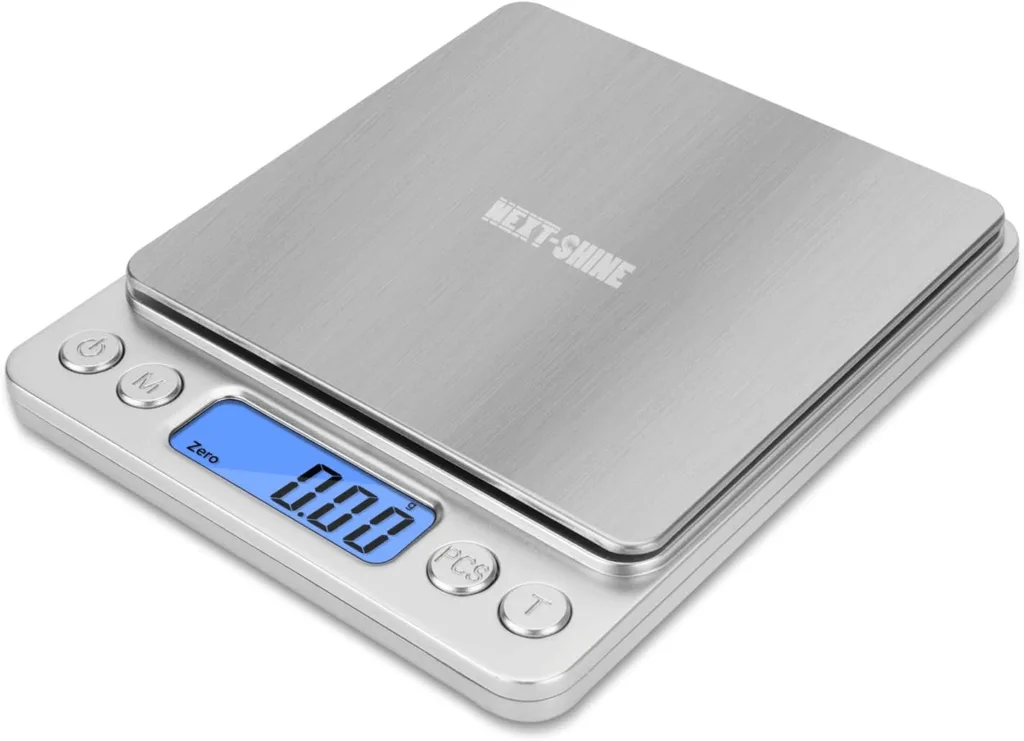
Cleaning & Maintenance: Keep Your Gear Performing
Even the best grinders, scales, and tampers can’t perform well if they’re dirty or clogged. Espresso gear sees oils, fines, and bacteria build-up over time — and neglect can affect flavor, machine performance, and longevity. Using proper cleaning tools ensures consistent shots and avoids costly repairs.
Here’s what you need to stay on top of maintenance:
- Backflush brushes – For cleaning brew group heads and gaskets on semi-automatic machines.
- Cleaning tablets – Used during blind backflushing to strip coffee oils and build-up.
- Grinder cleaning pellets or tablets – Absorb old bean oils and reduce stale flavor between bean changes.
- Descaling solutions – Help remove limescale in boilers and water pathways for better heat stability.
Regular maintenance schedule:
- Daily: Wipe steam wand immediately after each use and purge it with steam.
- Weekly: Remove the portafilter basket, clean it in hot water, and brush the group head.
- Monthly: Backflush with cleaning tablets and descale if using hard water.
- Quarterly: Remove burrs and brush out grinder to prevent build-up and maintain consistency.
Skipping these steps can lead to bitter or off-tasting espresso, blocked water flow, and even equipment wear. Prevention is cheaper and faster than repair — and it lets your gear shine cup after cup.
Best Cleaning Kit Pick: Espresso Cleaning & Descaler Kit
This kit includes backflush tablets, a grinder cleaning brush, and a premium descaler — everything you need to keep your grinder and machine in café condition without professional service.
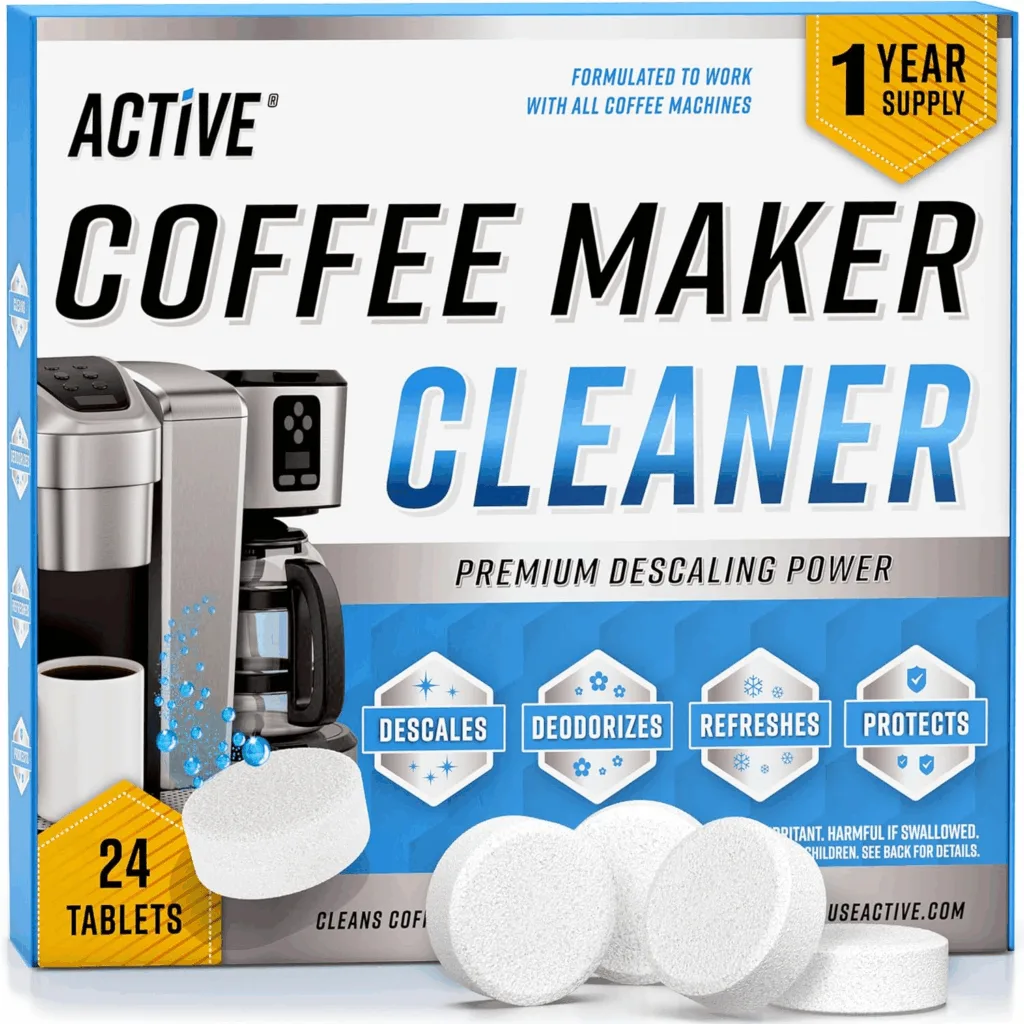
Tampers and Distribution Tools: Crafting a Perfect Bed
While grinders get all the attention, tampers and distribution tools are the unsung heroes of espresso consistency. They may look simple, but the way you tamp and distribute coffee grounds in your portafilter can make or break your shot. Without even distribution and a level tamp, water will take the path of least resistance—leading to under-extraction, channeling, or bitter flavors.
Let’s break this down:
- Distribution Tools help level and settle your grounds evenly across the portafilter before tamping. This ensures no air pockets or uneven clumps that cause channeling.
- Tampers compress the grounds to create uniform resistance for the pressurized water to extract espresso evenly.
Many beginners start with the stock tamper included in their espresso machine box, but these are often lightweight and inconsistent. A proper tamper gives you full control, feels ergonomic in the hand, and offers a balanced press for repeatable results. Some models are even calibrated to click at a specific pressure (typically 30 lbs) to improve consistency.
Why is this important? Inconsistent tamping can lead to uneven extraction. If one side of the puck is denser than the other, water flows faster through the looser side—leaving you with a bitter or sour cup. Even the fanciest grinder can’t fix bad puck prep.
Some baristas use just a tamper. Others add a distribution tool (also called a “leveler”) beforehand. Either way, the goal is the same: a flat, evenly compressed bed of coffee that resists channeling and pulls a consistent shot every time.
We recommend choosing a tamper and distributor combo that matches your portafilter size exactly—usually 58mm for most machines. Heavier models offer better control and a more professional feel.
Knock Boxes & Waste Tools: Streamline Your Workflow
If you’re brewing multiple shots per day, cleaning out the portafilter by banging it into the trash isn’t just messy — it’s inefficient, noisy, and damaging to your gear. That’s where a proper espresso knock box comes in.
Knock boxes are sturdy containers with a rubberized bar designed for banging out spent coffee pucks after extraction. Whether you’re working with a pressurized or bottomless portafilter, a knock box saves time and keeps your workflow tidy.

Why You Need One:
- Protects portafilter baskets from warping or cracking caused by hard surfaces
- Reduces mess by centralizing spent puck disposal
- Improves speed by allowing rapid clearing and re-dosing
- Minimizes odors and mold risk with removable inner containers for cleaning
Some knock boxes also come with silicone mats to prevent slipping and protect your counter. For high-volume home baristas or small cafés, countertop knock drawers are a more premium solution that slide under grinders to save space.
Pairing your knock box with proper waste management — like a composting bin for spent pucks — not only keeps your bar clean but adds sustainability to your espresso ritual.
Want more setup tips?
Check out our espresso machine guide for insights into complete espresso setups, including grinders, accessories, and best practices.
WDT Tools: Unlocking Even Espresso Extraction
If your shots are pulling unevenly or you’re getting sour and bitter notes in the same cup, channeling is likely the culprit. That’s where a WDT tool comes in. Short for Weiss Distribution Technique, this simple tool levels up your puck prep — and your flavor.
A WDT tool features thin needles (often acupuncture grade) used to stir and break up clumps in your espresso grounds after dosing. This leads to better distribution, fewer air pockets, and ultimately, more consistent extraction.
Why It Matters
- Reduces channeling: Ensures water flows evenly through the puck
- Improves shot consistency: Especially helpful with fine grinds or single-dose grinders
- Cost-effective upgrade: WDT tools are affordable and can be DIY’d or purchased
- Elevates taste: Better distribution means better-tasting espresso
While some tampers now come with built-in distribution features, a dedicated WDT tool gives more precise control. Combine it with a dosing funnel to avoid spillage and keep your prep mess-free.
For a deeper dive into puck prep and how it affects your shots, explore our guide on espresso beans and grind sizes.
Espresso Mats & Organization Gear: Tidy Barista, Better Brews
Great espresso isn’t just about beans and grinders — it’s also about workflow. That’s where espresso machine mats and organizational tools come into play. A clean, ergonomic setup helps you work faster, cleaner, and with more enjoyment.
Why Every Home Barista Needs a Station Mat
Tamping mats protect both your portafilter and countertop. They offer a stable, non-slip surface while absorbing excess pressure during tamping. Look for silicone mats with raised edges — they help contain stray grinds and drips.
Upgrade Your Workflow With Smart Storage
- Dosing cup holders: Keep accessories in place and reduce mess
- Knock boxes: Easily discard pucks without running to the trash
- Drawer organizers: Separate brushes, spoons, and cleaning tools neatly
- Magnetic hooks or shelves: Mount tampers or towels right next to your machine
Clutter leads to spills and stress — both enemies of great espresso. With the right mat and station setup, you can enjoy the brewing ritual rather than dread the cleanup.
Want more tips on barista gear for home setups? Browse the Grinders & Gear section of our blog for curated guides and product comparisons.
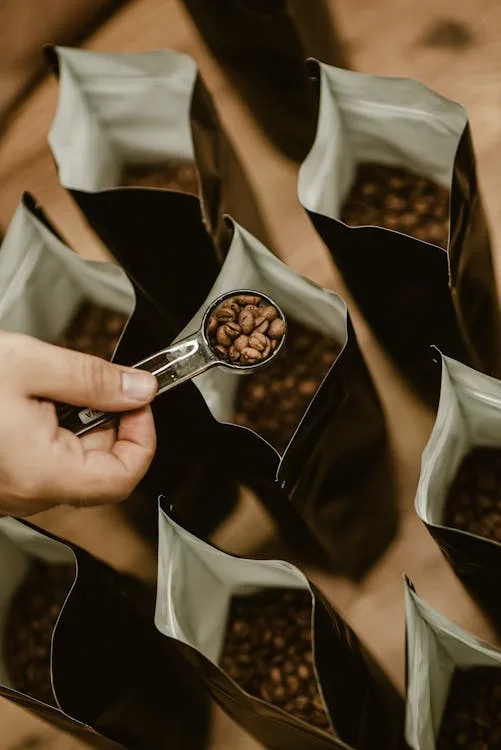
Maintenance Tools: Keeping Your Espresso Gear in Top Shape
Even the best espresso equipment will underperform without proper maintenance. From built-up coffee oils to clogged group heads, ignoring upkeep shortens your gear’s lifespan and compromises taste. That’s where simple maintenance tools make a huge difference.
Brushes, Cleaners, and More
Whether you’re using a single boiler or dual setup, cleaning the group head and portafilter after each use prevents rancid oils from building up. Nylon brushes, microfiber cloths, and espresso-specific cleaning powders are staples of any maintenance kit. For backflushing machines, make sure you use a blind filter and follow the manufacturer’s process to avoid damage.
Descaling and Long-Term Care
Descaling is often overlooked but crucial, especially if you’re using hard water. Over time, limescale can block water flow and alter temperature stability. Using a gentle descaler every few months ensures optimal performance. Many home baristas pair a descaler with water filters to prolong intervals between deep cleans.
Maintaining your espresso gear isn’t just about hygiene—it’s about flavor consistency and equipment longevity. If your espresso suddenly tastes off, it’s often a cleaning issue, not your beans.
Final Accessories & Smart Add-Ons for Serious Baristas
Beyond grinders, tampers, and scales, a few underrated accessories can quietly elevate your espresso game. These extras might not get the spotlight, but they make brewing smoother, cleaner, and even more fun.
1. Knock Boxes
Say goodbye to messy counters. A knock box is a simple container with a bar across the top, perfect for tapping out used coffee pucks. It’s more efficient and less damaging than knocking on your trash can or sink.
2. Dosing Funnels
Dosing funnels clip onto your portafilter and prevent ground coffee from spilling over the edges. Especially helpful when using a single-dose grinder, they keep your workflow tidy and precise.
3. Puck Screens
Puck screens sit on top of your coffee grounds in the portafilter and distribute water more evenly during extraction. This reduces channeling, increases consistency, and makes cleanup easier. They’re inexpensive, and many home baristas swear by them.
4. Portafilter Stands
If you weigh your espresso shots before extraction, a portafilter stand makes it easier to get accurate results without making a mess or scratching your scale. It also helps when tamping or using distribution tools.
5. Coffee Storage Canisters
To preserve freshness, store your beans in an airtight, UV-blocking canister with a CO₂ valve. This protects against light, moisture, and oxygen, keeping your beans flavorful for longer.
Many of these add-ons are budget-friendly and available in bundle kits. While not strictly essential, they dramatically improve cleanliness, workflow, and repeatability—especially if you’re pulling multiple shots daily.
Next, we’ll dive into FAQs to help address common gear-related questions from new and intermediate espresso lovers.
Frequently Asked Questions
What kind of grinder is best for espresso?
For espresso, a burr grinder is essential. It provides the consistent grind size required for proper extraction. Conical burr grinders are often favored for their balance of precision and affordability.
Do I really need a scale for making espresso?
Yes, a digital scale helps you dial in your espresso recipe by measuring coffee dose and yield accurately. It’s a game-changer for improving consistency and flavor.
Is a tamper necessary if my machine comes with one?
Factory-included tampers are often low quality. Investing in a well-balanced, properly sized tamper ensures more even pressure and better extraction—leading to richer crema and taste.
How often should I clean my espresso gear?
Daily wipe-downs and regular backflushing (weekly or biweekly) are crucial. Descaling and deep cleaning with proper cleaning kits should be done every 1–2 months depending on usage.
Can I use a regular kitchen thermometer for milk steaming?
While possible, espresso-specific clip-on thermometers are more accurate and convenient. They’re designed to help you steam milk to the ideal texture without overheating or burning it.
Want to keep your kitchen aesthetic looking sharp while staying low maintenance? Our partner site FindGreenery.com offers beautiful artificial plant decor that pairs well with espresso setups!
Conclusion: Equip Your Espresso Game Like a Pro
If you’re serious about espresso, having the right tools is more than a luxury—it’s essential for quality, consistency, and enjoyment. From grinding beans to pulling shots and keeping your machine clean, every piece of gear plays a vital role.
- 📍 Use a burr grinder to control grind size and maximize flavor.
- 📏 Always weigh your coffee with a scale to fine-tune your brewing ratio.
- 💪 Tamp evenly with a high-quality tamper to ensure even extraction.
- 🌡️ Use a thermometer to steam milk perfectly—no more guesswork.
- 🧼 Maintain your machine with regular cleanings to protect your investment.
With the right espresso gear, you don’t just make coffee—you craft it. Explore our top picks and guides across Barista guides to continue leveling up your barista skills from home.


Leave a Reply
You must be logged in to post a comment.